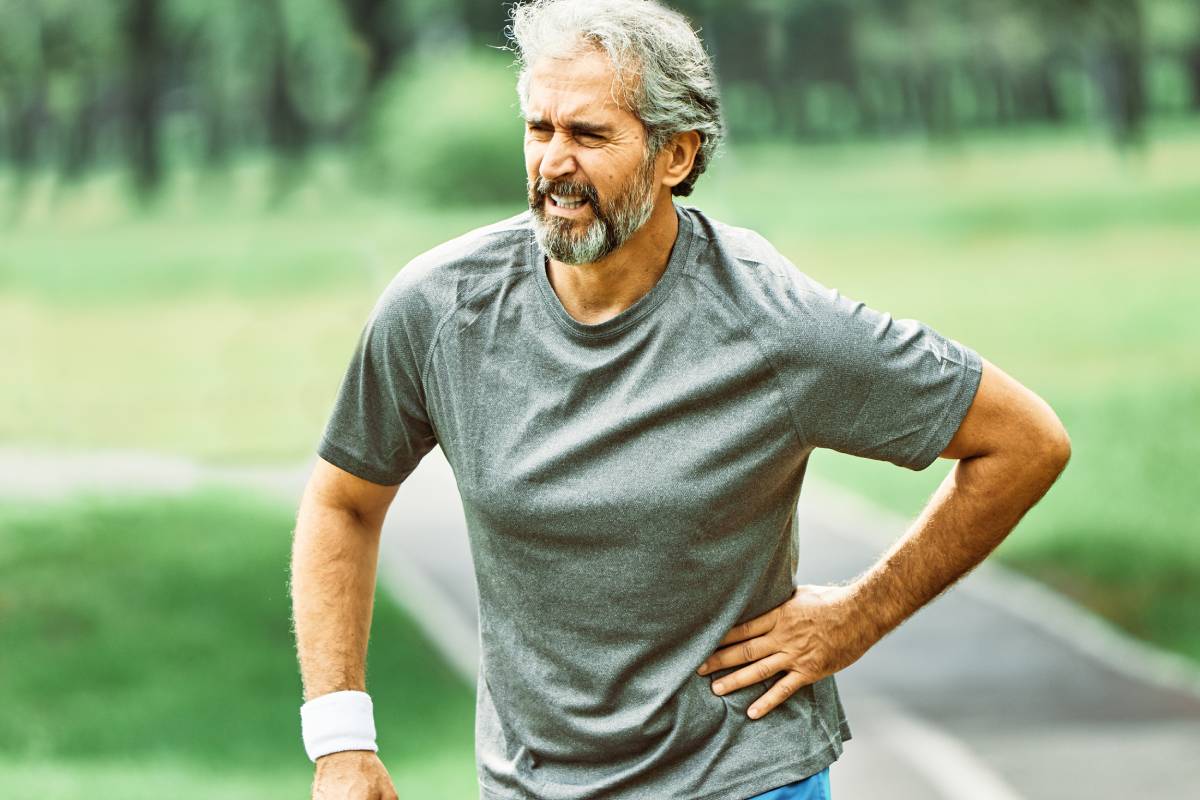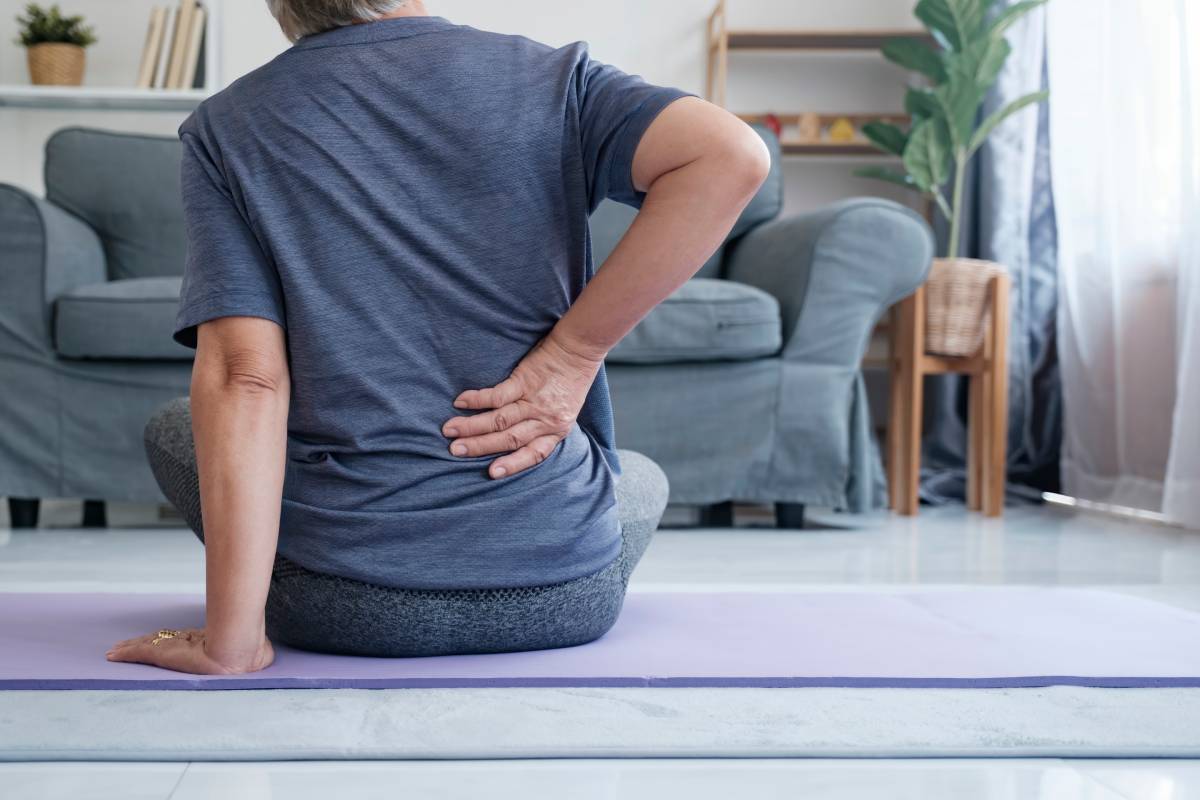Hip pain is a common concern that can impact daily activities and quality of life. Whether you’re experiencing discomfort, curious about the reasons behind a popping hip, or seeking ways to prevent hip pain altogether, understanding the underlying factors is key to effective management.
In this exploration, we delve into the causes of hip pain, the mysteries behind a popping hip, and practical strategies to keep your hips healthy. Join us on a journey to unravel the intricacies of hip health and discover actionable insights for a pain-free and active lifestyle.
WHAT’S CAUSING MY HIP PAIN?
Hip pain can be a discomforting and often disruptive experience, affecting many aspects of daily life. Understanding the potential causes of hip pain is crucial for effective management and relief. There are various factors that can contribute to hip pain, ranging from common conditions to more complex issues.
One common culprit for hip pain is osteoarthritis. Osteoarthritis occurs when the protective cartilage that cushions the ends of bones wears down over time. In the hip joint, this can result in pain, stiffness, and reduced range of motion. Ageing is a significant risk factor for osteoarthritis, but it can also be influenced by genetics and lifestyle factors.

Another prevalent cause of hip pain is bursitis. Bursae are small, fluid-filled sacs that cushion the bones, tendons, and muscles near joints. When these sacs become inflamed, a condition known as bursitis, hip pain can ensue. Repetitive activities, such as running or excessive sitting, can contribute to bursitis. Additionally, injury or strain to the hip can trigger inflammation in the bursae.
Muscle and tendon issues are also frequent sources of hip pain. Strains, sprains, or overuse of the muscles and tendons around the hip joint can lead to discomfort. This may occur due to sudden movements, improper form during exercise, or inadequate warm-up. Physical therapy and appropriate exercises can often help alleviate pain associated with muscle and tendon problems.
Hip fractures are more common in older individuals and can be a severe cause of hip pain. A fall or trauma can result in a break in the hip bone, leading to immediate pain and difficulty moving the affected leg. Fractures require prompt medical attention and may necessitate surgical intervention for proper healing.
In some cases, hip pain may be linked to issues in the spine. Conditions such as herniated discs or sciatica can cause radiating pain that extends to the hip. The interconnected nature of the spine and hip means that problems in one area can affect the other. Proper diagnosis by a healthcare professional is essential for determining the root cause and developing an appropriate treatment plan.
It’s important to note that lifestyle factors can play a role in hip pain. Being overweight or obese increases the load on the hip joints, contributing to wear and tear. Maintaining a healthy weight through diet and exercise can help reduce the risk of hip pain and improve overall joint health.
To address hip pain effectively, a comprehensive approach may be necessary. This may include a combination of medical intervention, physical therapy, lifestyle modifications, and, in some cases, surgical procedures. Seeking timely medical advice is crucial for accurate diagnosis and personalized treatment plans tailored to individual needs.

WHY IS MY HIP POPPING?
The phenomenon of your hip “popping” can be a bit puzzling and may raise questions about what’s going on in your body. While it might sound alarming, in many cases, a popping hip is not necessarily a cause for major concern. Let’s explore some common reasons why your hip might be popping and what you can do about it.
One frequent explanation for hip popping is tight muscles and tendons. When these soft tissues around the hip are tight, they can rub against the bones, creating a popping sensation. Stretching exercises that target the muscles around the hip joint can often help alleviate this tightness and reduce the popping.
Another common cause is the movement of tendons over bony structures. Tendons are tough bands of tissue that connect muscles to bones. Sometimes, as you move, tendons can slide over bony prominences, leading to a popping sound. This is generally harmless and is often associated with normal, everyday movements.
In some cases, the hip popping may be related to gas or fluid in the joint. Synovial fluid lubricates the joints, reducing friction between moving parts. Occasionally, the formation and collapse of tiny gas bubbles within the synovial fluid can create a popping sound. This is similar to the way a knuckle “cracks” and is usually not a cause for concern.
Structural variations in the hip joint can also contribute to popping. For instance, the hip joint is a ball-and-socket joint, and variations in the shape of the ball or socket can lead to popping or clicking sounds. While these variations are often present from birth, they may not cause symptoms until later in life.
Sometimes, hip popping can be associated with muscle imbalances or weakness. When certain muscles are not adequately supporting the hip joint, it can affect the way the joint moves, potentially leading to popping. Strengthening exercises targeted at the muscles around the hip can help improve joint stability and reduce popping.
In rare cases, persistent or painful hip popping may be associated with underlying joint conditions, such as labral tears or cartilage damage. These issues may require medical evaluation and intervention. If you experience pain, swelling, or a significant decrease in joint function along with hip popping, it’s advisable to consult with a healthcare professional for a thorough assessment.
In terms of self-care, maintaining a regular exercise routine that includes activities to strengthen the muscles around the hip can be beneficial. Stretching before and after exercise can also help improve flexibility and reduce tightness. If you’re unsure about which exercises are suitable for you, consulting with a physical therapist can provide personalized guidance.
HOW CAN I PREVENT HIP PAIN?
Preventing hip pain involves adopting a proactive approach to maintain the health and functionality of your hip joints. Whether you’re a young adult or in your golden years, taking steps to prevent hip pain can contribute to overall well-being and an active lifestyle.
Let’s explore some practical strategies that can help keep your hips happy and pain-free.

- Stay Active with Regular Exercise: Engaging in regular physical activity is crucial for hip health. Exercise helps strengthen the muscles around the hip joint, providing support and stability. Activities like walking, swimming, and cycling are low-impact exercises that are gentle on the hips while promoting overall joint flexibility.
- Maintain a Healthy Weight: Carrying excess weight puts additional stress on your hip joints, increasing the risk of wear and tear. Maintaining a healthy weight through a balanced diet and regular exercise can significantly reduce the load on your hips and lower the likelihood of developing hip pain.
- Practice Good Posture: Proper posture is essential for preventing hip pain. Whether sitting at a desk, standing, or walking, maintaining good posture helps distribute your body weight evenly and reduces strain on the hip joints. Be mindful of your posture throughout the day to promote spinal alignment and hip joint health.
- Stretch Regularly: Incorporating stretching exercises into your routine can enhance flexibility and reduce muscle tightness around the hips. Focus on stretches that target the hip flexors, hamstrings, and outer hip muscles. Yoga and Pilates are excellent options for improving overall flexibility and promoting joint health.
- Use Proper Body Mechanics: Pay attention to your body mechanics during daily activities. When lifting heavy objects, bend at the knees and hips rather than the waist. Avoid sudden, jerky movements that can strain the hip joints. Using proper body mechanics helps protect your hips from unnecessary stress and reduces the risk of injury.
- Choose Joint-Friendly Activities: Opt for activities that are easy on the joints, especially if you have a history of hip pain or discomfort. Swimming, elliptical training, and cycling are examples of exercises that provide cardiovascular benefits without putting excessive stress on the hips.
- Invest in Supportive Footwear: The alignment of your feet can affect your hip joints. Wearing supportive and properly fitted shoes can help maintain good posture and reduce the risk of hip pain. Choose footwear that provides adequate arch support and cushioning.
- Stay Hydrated and Maintain Bone Health: Proper hydration is essential for joint health, as it helps maintain the lubricating fluid in your joints. Additionally, ensure you get enough calcium and vitamin D in your diet to support strong and healthy bones, which form the foundation of your hip joints.
- Listen to Your Body and Rest When Needed: Pay attention to any signs of discomfort or fatigue. If you experience pain or stiffness in your hips, it’s crucial to give your body adequate rest. Overworking tired muscles increases the risk of injury and may contribute to hip pain over time.
- Consult with Healthcare Professionals: If you have existing hip issues or concerns, seek guidance from healthcare professionals, such as physical therapists or orthopaedic specialists, can provide personalized advice and exercises tailored to your needs.
Conclusion
In the realm of hip health, knowledge is empowerment. From uncovering the various causes of hip pain, including osteoarthritis, bursitis, and muscle issues, to demystifying the reasons behind a popping hip, our journey has shed light on the intricacies of this vital joint.
Armed with this understanding, taking proactive steps to prevent hip pain becomes not only feasible but also essential. Whether through regular exercise, mindful habits, or seeking professional guidance, the path to maintaining happy and pain-free hips is within reach.
For those embracing the high-intensity world of fitness, such as CrossFit, it’s particularly crucial to integrate targeted exercises and proper form to safeguard hip health. Embrace the wisdom gained here to foster a life of comfort, mobility, and overall well-being. Your hips, after all, are the foundation of your movement, and investing in your health is an investment in your vibrant future.














































